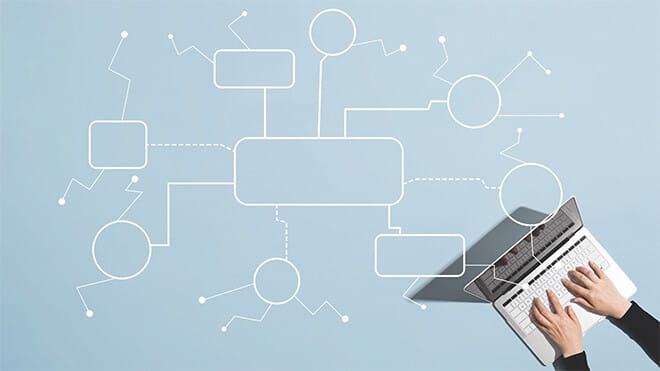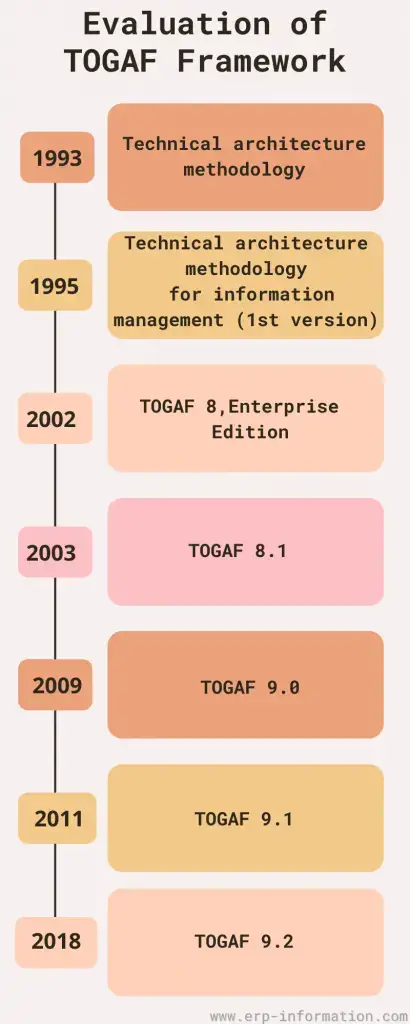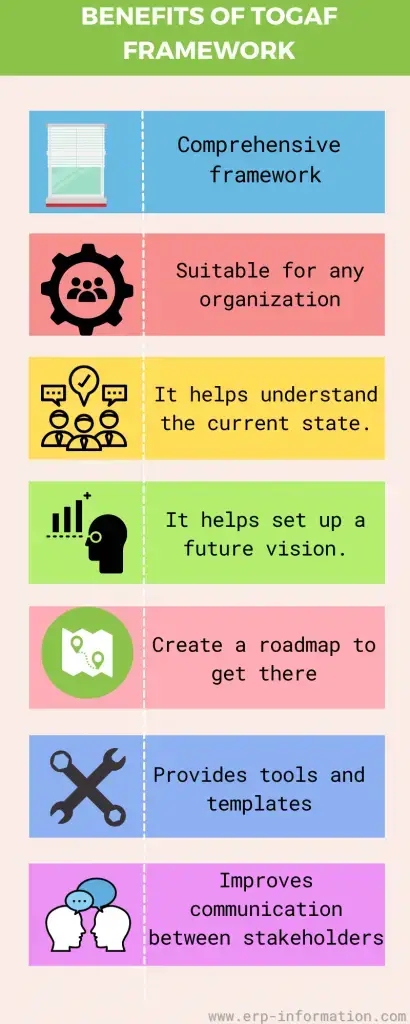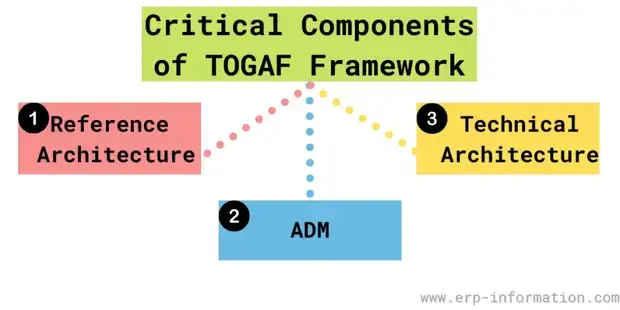Decoding TOGAF: Resources, Architecture, Process - Course Monster Blog

TOGAF offers new perspectives as designing, planning, and implementing enterprise architecture is a challenging task that most organizations face. It can be time-consuming and arduous, and many organizations find it hard to allocate sufficient resources to this task.
However, TOGAF offers a framework that enables organizations to create, plan, and execute their enterprise architecture more efficiently and effectively. This framework has been available since 1995 and has undergone nine different versions over time.
Want to know more about TOGAF? Visit our course now.
Evaluation

Now, let’s consider the assessment of the framework. The Open Group Architecture Framework is derived from the Technical Architecture Framework for Information Management (TAFIM).
During the 1990s, the US Department of Defense developed TAFIM, an IT management framework that provided insights into the DoD’s internal technical infrastructure.
In 1993, a technical architecture methodology was introduced, followed by the release of the technical architecture methodology for information management (TOGAF) in 1995.
TOGAF 7 was released as a technical edition in 2001, and the enterprise edition TOGAF 8 followed in 2002. The framework was updated to version 8.1 in 2003.
In 2005, The Open Group took over TOGAF and released version 8.1.1 in 2006.
In 2009, version 9.0 was released with more comprehensive guidelines and techniques. Version 9.1 followed in 2011, and the latest version is 9.2.
What is TOGAF Framework?
The Open Group Architecture Framework, or TOGAF, is an enterprise architecture framework that assists organizations in designing, planning, and managing their enterprise architecture.
It is the world’s most popular framework for enterprise architecture, having been utilized by major corporations such as Coca-Cola, IBM, Microsoft, and Oracle.
TOGAF is an all-encompassing framework that can be utilized by organizations of any size or industry. It aids organizations in comprehending their current state, identifying their desired destination, and creating a roadmap to achieve their goals.
Furthermore, it includes tools and templates that simplify the process of designing and implementing an enterprise architecture.
What are the benefits?

Comprehensive framework
TOGAF is not a process or a method but a framework that consists of an architecture development methodology, incorporating best practices, guidelines, and tools to create enterprise architectures. It establishes consistent principles to adhere to when constructing your architecture.
The TOGAF Architecture Development Method (ADM) provides a systematic approach to developing an enterprise architecture and can be customized according to the requirements of the project.
Suitable for any organization
The TOGAF framework is appropriate for organizations of all sizes, ranging from small businesses to large enterprises.
It can be tailored to meet the specific requirements of your organization, providing a flexible and adaptable framework that can expand as your business grows.
Helps to understand the current state
The framework assists in comprehending the existing state of your enterprise architecture to establish where improvements are required.
Furthermore, it enables you to recognize opportunities for growth and identify areas for enhancement.
Helps set up a future vision
The framework facilitates the development of a vision for the future state of your organization, encompassing the identification of opportunities and the definition of goals that must be accomplished.
Creates a roadmap to get there
The framework assists in creating a roadmap to transition from the current state of your organization’s architecture to its future vision.
This involves identifying the projects and activities necessary to achieve this objective.
Defines goals, results, and measurements along the way
This guides you on how to establish objectives, results, and metrics to ensure that you are making progress toward reaching your ultimate goal.
Provides tools and templates
The framework offers various tools and templates to aid in your architecture development process.
One such tool is the TOGAF Architecture Repository, which comprises reusable assets for constructing enterprise architectures. Additionally, the framework provides instructions on how to use these tools efficiently.
Improves communication between stakeholders
The framework enhances communication and comprehension among all stakeholders involved in architecture development, ranging from project managers to business analysts and architects themselves.
This ensures that everyone is striving towards achieving their objectives by adhering to the framework’s best practices for architecture development.
What are the critical TOGAF components?

The fundamental components consist of the Reference Architecture, the ADM, and the Technical Architecture.
Reference Architecture
The framework elucidates how an organization’s enterprise architecture ought to be structured and arranged.
It provides instructions on how to design and implement your individual applications using TOGAF and how they should interrelate within the framework for enterprise architecture development.
ADM
ADM is the methodology that organizations utilize to design, plan, and manage their enterprise architecture.
TOGAF provides a series of sequential steps that can be followed to create your architecture, promoting alignment and shared objectives amongst all stakeholders.
ADM can be tailored and personalized to meet specific business requirements.
Technical Architecture
The framework provides guidance on the selection of appropriate technologies and standards for an organization’s IT infrastructure. It also defines reference models for various technical architectures, which help organizations make informed decisions and understand their options.
Conclusion
The TOGAF framework is a comprehensive and widely adopted methodology for enterprise architecture development. It provides guidelines, best practices, and tools to help organizations design, plan, and manage their enterprise architecture in a structured and organized way. With its Architecture Development Method, Reference Architecture, and Technical Architecture, TOGAF enables organizations to create a roadmap to achieve their future vision while identifying areas for improvement and growth opportunities. The framework is flexible and scalable, making it suitable for businesses of any size and industry. By following the TOGAF framework, organizations can improve communication and understanding among stakeholders, ensure compliance with standards, and make informed decisions about their IT infrastructure.
Here at CourseMonster, we know how hard it may be to find the right time and funds for training. We provide effective IT Certifications that enable you to select the training option that best meets the demands of your company.
For more information, please get in touch with one of our course advisers today or contact us at training@coursemonster.com




Comments ()